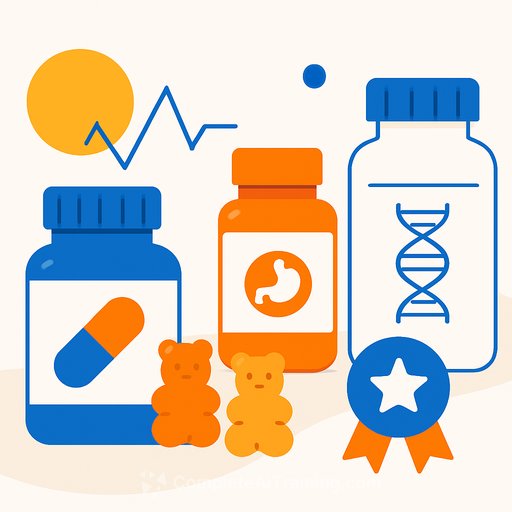Hestia Insight's 10-Q: A clear pivot from vending to AI and IP consulting - what product leaders should note
Hestia Insight Inc. is moving on from its vending roots and reorganizing around AI product development and IP-based consulting. The latest Form 10-Q for the quarter ended August 31, 2025, makes the shift explicit and shows the financial trade-offs of building for a new market.
This is the kind of reset that forces product teams to get disciplined: tighter bets, faster validation, and a build plan that aligns with capital and compliance demands.
Financial snapshot
- Total revenue: $8,000 - minimal by design as the company prioritized planning and setup for future revenue.
- Operating income (loss): $(281,317) - driven largely by higher professional fees tied to becoming and being a public company.
- Net income (loss): $(934,426) for the nine months ended August 31, 2025.
- Basic and diluted loss per share: $(0.03).
Business highlights
- Vending operations discontinued: Hestia Vending completed the sale and termination of its vending machines and related equipment, ending vending and charging-station operations.
- Strategic shift: Focus now centers on AI product development and IP-based consulting, replacing legacy healthy vending and portable charging activities.
- Capital plan: Board approved up to $5M in equity and/or convertible debt to expand the AI team, accelerate R&D, market consulting tools, and support general corporate needs.
- Sector focus: Healthcare and biotech remain core through subsidiaries, offering strategic consulting, medical supply sales support, management, and capital markets advisory.
- Outlook: The company plans to pursue strategic acquisitions and joint ventures with emerging growth companies with unique sciences and technologies.
What this means for product development
Revenue is light now because the company is retooling for a different buyer and product set. That can be a smart trade if your roadmap turns into repeatable services and scalable software within 2-4 quarters.
- Re-scope the product thesis: Move from hardware or location-based vending logic to AI-driven advisory workflows. Anchor on a few healthcare/biotech use cases where data availability and compliance are workable.
- Build services-to-software path: Start with expert-led consulting to validate problems, then codify repeatable steps into internal playbooks and light-weight tools, and finally productize into a platform.
- Team design: Prioritize ML engineers, data engineers, domain SMEs (clinical, regulatory), and product managers with B2B workflow experience.
- Regulatory by default: In healthcare, design for privacy and audit trail from day one. Keep data handling, explainability, and access controls simple and defensible.
- Monetization tests: Pilot pricing across advisory retainers, usage-based tooling, and outcome-linked packages to find margin headroom.
Near-term milestones to de-risk the plan
- 1-3 lighthouse pilots in healthcare/biotech with clear problem statements and defined success metrics.
- Internal "consulting-to-tool" pipeline: convert top recurring analyses into no-code templates, then into product modules.
- Data strategy: identify compliant data sources, integration approach, and annotation standards.
- Documentation: clinical validation notes, model cards, and security controls ready for enterprise reviews.
- Sales enablement: a short proof pack with 2-3 case narratives, quantified outcomes, and implementation timelines.
Metrics to watch next quarter
- R&D spend vs. capital raised and the resulting feature velocity.
- Pilot count in healthcare/biotech and conversion to paid engagements.
- Revenue mix: consulting vs. software/tooling; early gross margin trends.
- AI headcount growth and time-to-ship for core modules.
- Announcements on acquisitions or joint ventures that add data, distribution, or domain IP.
- Cash runway after the proposed $5M raise and any follow-on financing signals.
Action checklist for product teams making a similar shift
- Define the single highest-value workflow you can improve in under 90 days; ship an MVP that proves it.
- Use service delivery to collect data and refine requirements; build thin product layers on the back of real usage.
- Keep architecture simple: clear data contracts, audit logs, permissioning, and model swap capability.
- Run weekly evidence reviews: pilot outcomes, user interviews, and margin snapshots drive the roadmap.
- Price tests early; push for annual commitments once outcomes are repeatable.
For primary source details, see the company's filings on SEC EDGAR. If your team needs to upskill for AI product work, browse role-based tracks at Complete AI Training.
Your membership also unlocks:






